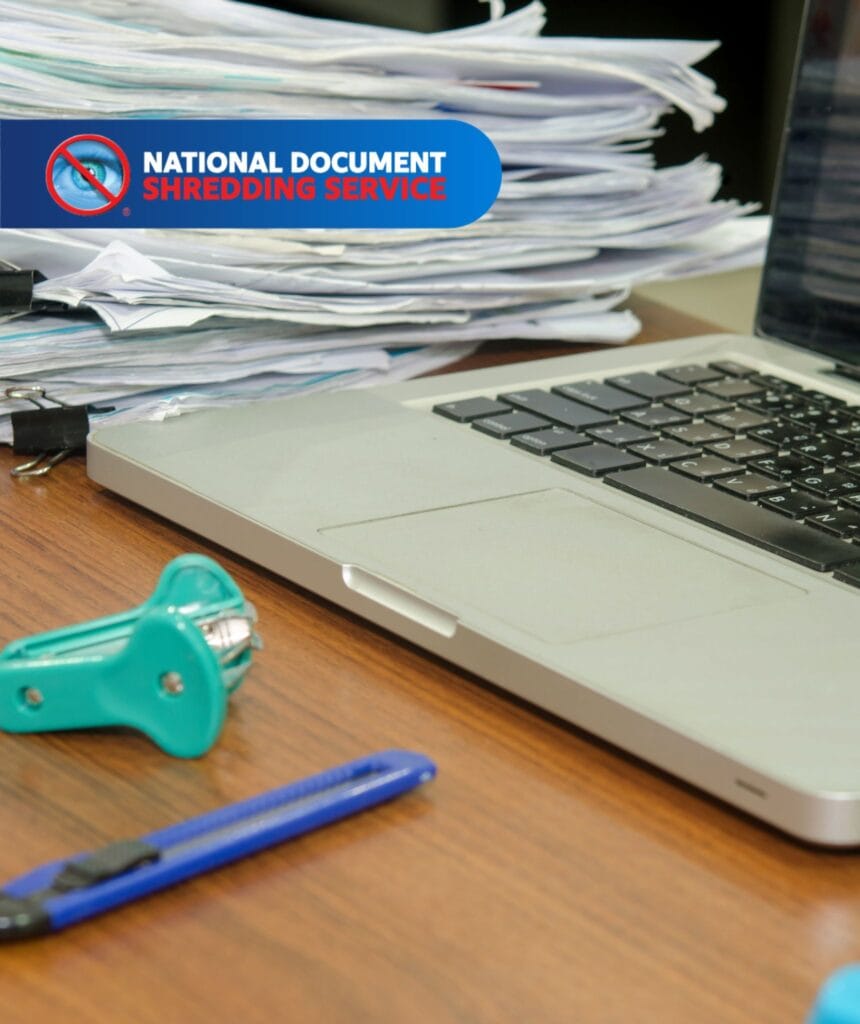What is Secure Document Destruction? Digital Data Destruction vs Secure Document Destruction
In an era where data breaches are a growing concern, securely disposing of sensitive information is critical for businesses and individuals. At National Shred, we often get asked, “What is secure document destruction?” and how it compares to digital data destruction. While both processes aim to protect confidential information, they differ in their methods, applications, and compliance requirements. In this article, we’ll answer the question, explore the differences, and help you choose the right solution for your needs.
What is Secure Document Destruction?
Secure document destruction is the process of physically shredding paper-based records containing sensitive information, such as financial reports, client data, or employee records, to ensure they are unreadable and irretrievable. This protects against identity theft, data breaches, and non-compliance with privacy laws.
Key Features of Secure Document Destruction
Physical Shredding: Industrial-grade shredders reduce paper to small particles or strips, meeting security standards like ASIO T4 in Australia.
Regulatory Compliance: Aligns with the Australian Privacy Principles (APPs) under the Privacy Act 1988, ensuring legal disposal of personal information.
Secure Process: Professional services, like those at National Shred, offer locked bins, tracked transport, and certificates of destruction for a secure chain of custody.
Eco-Friendly: Shredded paper is recycled, supporting sustainable practices.
When to Use Secure Document Destruction
Choose secure document destruction for:
Outdated contracts or invoices
Medical or legal documents
Employee or client records
Any sensitive paper-based information
What is Digital Data Destruction?
Digital data destruction involves securely erasing or destroying electronic data stored on devices like hard drives, USBs, SSDs, or servers, ensuring it cannot be recovered by unauthorized parties.
Key Features of Digital Data Destruction
Electronic Methods: Uses software-based data wiping or physical destruction (e.g., degaussing, crushing) to eliminate data.
Compliance Standards: Adheres to guidelines like the Australian Government’s Information Security Manual (ISM) and NIST 800-88 for data sanitization.
Verification: Provides audit trails and certificates to confirm data destruction.
Specialised Equipment: Requires tools like degaussers or crushers for physical destruction, or software for secure overwriting.
When to Use Digital Data Destruction
Opt for digital data destruction for:
Old computers or servers
External storage devices (e.g., USBs, hard drives)
Mobile devices or tablets
Cloud-based data (via secure deletion protocols)
Key Differences Between Secure Document Destruction and Digital Data Destruction
Aspect
| Medium |
| Method |
| Equipment |
| Compliance |
| Output |
| Cost Factors |
Secure Document Destruction
| Paper documents |
| Physical shredding |
| Industrial shredders |
| Australian Privacy Principles, ASIO T4 |
| Recyclable shredded paper |
| Volume of paper, service frequency |
Digital data Destruction
| Electronic data on devices or media |
| Data wiping, or physical destruction |
| Specialised software or hardware |
| NIST 800-88, Australian ISM |
| Erased or destroyed media |
| Device type, and destruction method |
Why Secure Document Destruction and Digital Data Destruction Matter
Both secure document destruction and digital data destruction are vital for comprehensive data security. A single breach can result in financial losses, reputational damage, and legal penalties. The Office of the Australian Information Commissioner (OAIC) reported a 19% increase in data breaches in Australia in 2024, underscoring the importance of proper disposal practices.
At National Shred, we specialise in secure document destruction to help businesses comply with privacy laws and protect sensitive information. For digital data, we recommend partnering with certified e-waste and data destruction specialists for a complete approach.
Choosing the Right Destruction Service
For Paper Records: Partner with National Shred for secure, compliant, and eco-friendly document destruction. Explore our on-site shredding or secure bin services.
For Digital Data: Work with certified digital destruction providers to ensure compliance with ISM and NIST standards.
For Both: Use trusted providers for each medium to cover all bases.
Best Practices for Secure Data Disposal
Audit Records Regularly: Identify paper and digital records requiring destruction.
Choose Certified Providers: Ensure services offer secure processes and compliance certifications.
Train Staff: Educate employees on proper disposal protocols.
Keep Records: Retain certificates of destruction for audits and compliance


